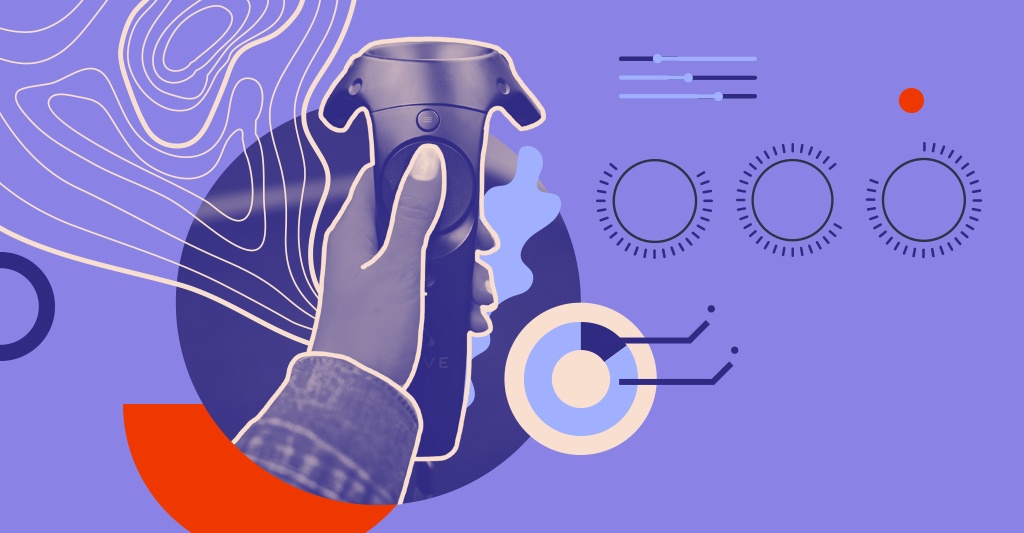Why Use Voice Analytics? Hard Metrics For Soft Skills
We all know a good presentation when we hear it—but the question is, which speech characteristics contribute to that "great sound"?
While many business leaders consider public speaking to be a "soft" skill, speech attributes like enthusiasm, confidence, assertiveness, and authenticity are actually composed of features that can be captured and measured. Just as Artificial Intelligence algorithms can identify and recognize features of a visual scene, analytics software can now identify and quantify precise speech characteristics. This is very important for speakers who want to leverage this useful information to "tweak" their presentation sound.
For example, analytics can pinpoint when a speaker sounds unclear, or boring, or "ditsy". These AI-powered insights into individual voice characteristics provide a powerful roadmap for improvement, guiding leaders through personalized speech practice sessions that enhance their speaking style in quantifiable ways.
"An interviewer can now obtain voice samples of candidates in action via smartphones or video interviews", says Mike Russiello, CEO of HR Avatar. "These samples can be analyzed for speech qualities such as confidence and other vibes—and that transition is as significant as the one from paper to the Internet."
The Limits Of Traditional Speech Coaching
Although one-on-one sessions will always be the gold standard for communications coaching, traditional person-to-person coaching isn’t always a practical option for aspiring speakers.
- First, traditional speech coaching is subjective.
Each coach brings their own unique approach to the table—and while most coaches do use rubrics for speech assessment, their instincts and experience play equally crucial roles in their approaches. Some coaches will choose to focus on improving aspects of speech that others might consider unimportant. And no coach can objectively prove how audiences may respond to a given speaking style. - Second, conventional speech classes may be inconvenient.
These programs can involve hours of intensive work, as well as group sessions. For an aspiring leader who can’t afford to take time away from work, this approach may simply be impractical. And while classes and toastmaster clubs are great for getting feedback, it’s often crucial for learners to get that feedback when and where it’s needed most—for example, on the night before a big speech. - Third, the cost of one-on-one coaching has traditionally made it available only to the highest-level executives.
However, speech coaching would provide tremendous tangible benefits for professionals at all levels - from the engineer presenting recommendations to the new salesperson practicing a pitch. Unfortunately, few have the necessary resources to make an investment of this magnitude.
But thanks to cutting-edge technology, this landscape is beginning to shift.
Quantifying The Elements Of "Great Speaking"
Over the past several years, researchers at institutions around the world have been quantifying many aspects of speech—identifying the specific attributes that make a speaker sound confident, energetic, boring, persuasive, or nervous. A new wave of research is applying digital analytics to human speech—and delivering strikingly precise recommendations for improvement.
For example, a 2018 study by researchers at Florida Atlantic University found that speakers with lower voice pitches are consistently perceived as better leaders, regardless of their actual leadership abilities. But it’s not only low pitch that matters. Other studies have found that speakers should vary their pitch within the range they’d use to say "uh-huh" to a friend’s question. If the speaker has to strain upward or downward to hit a certain pitch, then they’ve wandered out of that ideal range.
In another study, Stanford linguists found that people under age 40 are more likely to "upspeak"—to rise in intonation at the end of sentences—than people over 40. And while upspeak may be less noticeable among younger peers, the study found that older listeners are likely to hear it as a sign of nervousness and inexperience. Even so, researchers note that a small amount of upspeak can help lower listeners’ resistance to new ideas—as long as it’s used sparingly.
And while speech experts have often urged speakers to stay within an "ideal pace range" of 120 to 160 words per minute, newer research finds that higher rates may be better. In his book The Science of Speaking, author Nick Enge reports that many leading speakers pace their speech around 163 to 225 words per minute—with an average of 176 words per minute. Thus, the ideal pace of a speech may depend on its context, and on other speech characteristics such as enthusiasm and content.
As findings like these continue to become available, speech coaches and organizations around the world are beginning to tap into their value as training insights.
Leveraging Analytics To Produce Better Speakers
Coaching companies are already looking beyond in-person training in virtual coaching, using video platform tools. In her book On-Camera Coach, expert Karin Reed points out that in today’s digital-first business world, it’s crucial to train leaders digitally, using remote tools. As speech analytics software becomes more widely available, a growing number of coaches are incorporating technology into their coaching practices.
For example, business professors have begun using cloud-based public speaking practice tools to help train their students on specific aspects of speech improvement. "Each student in my entrepreneurship class utilized automated coaching software to assist with practicing their pitches", says Tommy White, executive-in-residence at American University’s Kogod School of Business. "The program plays a vital role in dramatically improving their performance."
Beyond academia, organizations are also tapping into the power of speech analytics. Software companies now use automated coaching software to train leaders to deliver presentations.
"Being an effective, inspiring communicator is a ’must-have’ leadership capability", says Andy Billings, Head of Profitable Creativity at Electronic Arts. "That’s why we use automated coaching software in our accelerated leader development programs. Our leaders appreciate the data-based dashboard to improve their own presentations and benchmark by analyzing presentations of their colleagues."
While great speakers aren’t made overnight, quantifiable insights from voice analytics can help transform nervous speakers into confident ones, transform boring lectures into engaging presentations, and empower all business leaders to speak more effectively.









